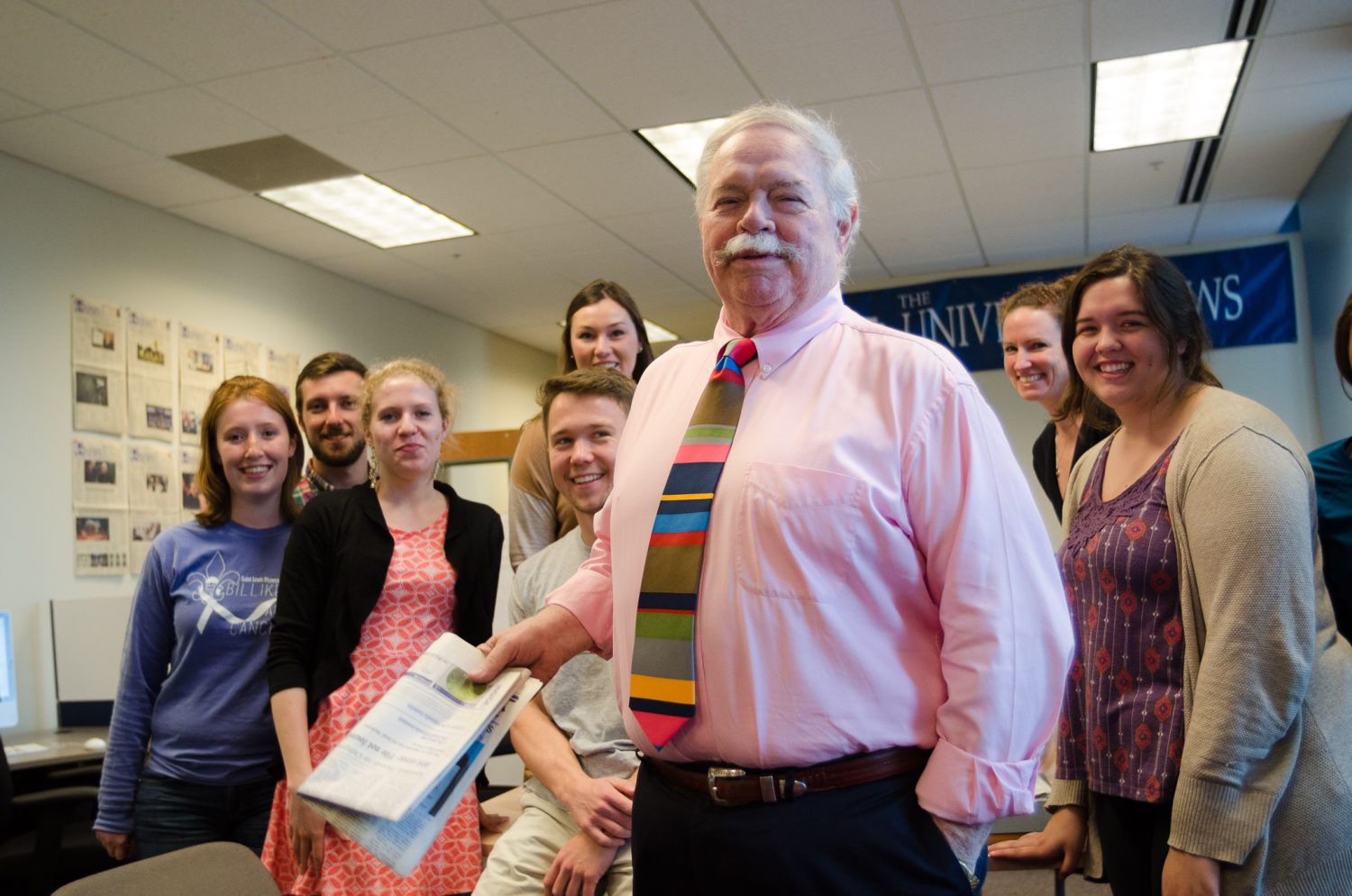Credit the Holy Spirit with creativity. For Constantine it was a sign in the clouds and IN HOC SIGNO VINCES; for Augustine it was a child who implored “take up and read”; and for Ignatius de Loyola, it was a cannon ball that broke his leg.
It was the cannon ball that produced the injury that forced Ignatius into a recovery that, 500 years later, is still rewarding. Perhaps it’s a dubious assertion, but it’s likely that without the cannon ball, there would be no SLU. But hold on.
Back up. Ignatius de Loyola (birthname Inigo Lopez de Loyola) was born July 13, 1491, the youngest of 11, in a Basque province of Spain. In 1506 he left home to become a page in the house of a distinguished noble, and in 1521 he departed for Pamplona to join the army of the local duke. Shortly thereafter, in a minor skirmish, came the providential cannon ball.
Ignatius was a restive young man with a flair for sin (women, gambling, fighting, et. al). While recovering, however, Ignatius could do nothing but brood and read. He read a life of Christ and the lives of the saints, and eventually his brooding and reading catalyzed an explosive spiritual epiphany:
Ignatius concluded that his life was negligible if not lived in consummate surrender to the will of Christ.
That surrender, which produced a saint, quickly pulled Ignatius into the apostolate. Save for his walking staff and a tattered cassock, Ignatius relinquished all his possessions and immersed himself in the work of, as he put it, “helping souls.” It was during this time that Ignatius became obsessed with perceiving every fluctuation in the Divine plan. One time, this devotion went too far.
Soon after his convalescence, while traveling by mule to the town of Montserrat, Spain, Ignatius met a Moor who initiated a discussion of the Virgin Mary. The moor generally agreed with the Catholic claims, except for the contention that Mary was a virgin at Christ’s birth. At that comment, the Moor departed, and Ignatius was left to consider what the Moor had said. Ignatius’s autobiography, in third person, tells the rest:
” _ it seemed to him he had done wrong in allowing that a Moor should say such things of Our Lady, and he was obliged to stand up for her honour. And thus there were coming upon him desires to go and find the Moor, and stab him for what he’d said.
“Carrying on a long time with the conflict aroused by these desires _ he decided on this: namely, to let the mule go on a loose rein up to the point where the roads divided. And if the mule went along the town road, he would look for the Moor and stab him; and if it didn’t go towards the town but went along the main road, he’d leave him be.”
Providence heard his call. The mule went opposite the Moor.
Retrospectively, the story of Ignatius and the Moor is endearing, even amusing. But it is more than an anecdote. It illuminates the unsought chaos of a soul grasping to come to grips with the meaning of a massive spiritual moment-a moment felt by only a fistful of people throughout history, and a moment that is not easily assimilated into the life of a man accustomed to womanizing.
Ignatius’s relentless pursuit of God gradually struck a smoother frequency. After the incident with the Moor, Ignatius began to sketch his notes for the Spiritual Exercises, one of the most spiritually edifying documents produced in Christian history. The reification of Ignatius’s surrender to Christ crystallized most brilliantly in 1540, when Ignatius secured papal approval to create a new order of priests. A year later he was selected the first superior-general of the Society of Jesus.
After the Society’s founding, Ignatius remained in Rome where he oversaw, via thousands of letters, his rapidly growing endeavor. Within ten years of Ignatius’s death, in 1556, the Jesuits numbered over 1,000 and already had priests trying to accommodate the skeptical stare of an emperor-in China. The first Jesuit college opened in 1542 in Padua, followed by another opening in Bologna (1546) and Messina (1548). In 1551, in Rome, the Jesuits founded Gregorian University, still today one of their most prestigious universities.
For the past five centuries, across all continents and almost every country, the Jesuits, infused with Ignatian devotion and strengthened by his Spiritual Exercises, have been teaching, administering, preaching, feeding, protecting, caring, and loving; and it all has been done, as St. Ignatius wanted it to be, AD MAJOREM DEI GLORIAM-the Jesuit motto meaning “for the greater glory of God.”
July 31st is St. Ignatius’s feast day, and for the 11,000 plus members of the SLU community, it is not too soon to celebrate.
Matt Emerson is a sophomore studying political science and philosophy.



